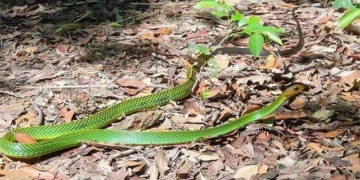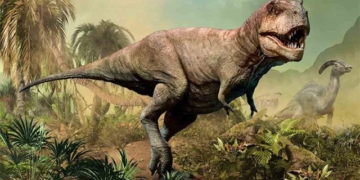The mummies discovered in China date back 4,000 years and are exceptionally well-preserved. They contain numerous mysteries that scientists have yet to decode.
Located in a cemetery in the Tarim Basin, Xinjiang, western China, hundreds of bodies have been excavated. These are known as the Tarim mummies, appearing as if they once lived.
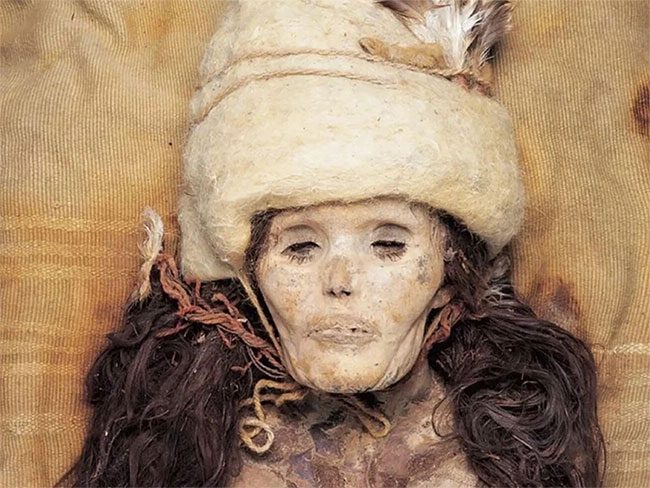
The mummy of Princess Xiaohe is one of the standout discoveries in the Tarim Basin. (Photo: National Geographic).
These bodies date back approximately 4,000 years. Ancient DNA analysis by scientists has revealed some groundbreaking discoveries.
Controversy Over Origins
By observing clothing, hairstyles, and jewelry, scientists speculate that they belonged to an ancient culture of Indo-European migrants who settled thousands of years ago.
The perfect preservation of these mummies is not the only surprising aspect. DNA results reveal that the bodies belonged to indigenous populations of the Tarim Basin, yet they differ genetically from neighboring populations, deepening the mystery.

Hundreds of mummies have been excavated in the Tarim Basin, most of which are remarkably intact. (Photo: National Geographic).
Today, researchers are still questioning the cultural activities, daily lives, and roles of these individuals in the expansion of modern humans across the globe.
The naturally preserved mummies are scattered throughout the Tarim Basin and were first excavated by European explorers in the early 20th century. Over time, more and more bodies have been uncovered along with spectacular cultural artifacts.
To date, hundreds of bodies have been discovered. The oldest mummies date back about 2,100 years, while the most recent are around 500 years old.
One of the most famous mummies found in the Tarim Basin is the “Princess Xiaohe” or “Beauty Xiaohe”. She is exceptionally well-preserved, with even her eyelashes still intact over time.
Initially, these mummies were found wearing Western-style clothing, and their European-like appearance led scientists to believe that they were the remains of a group of Indo-European migrants. They likely had connections to Siberians known for their pastoralism during the Bronze Age.
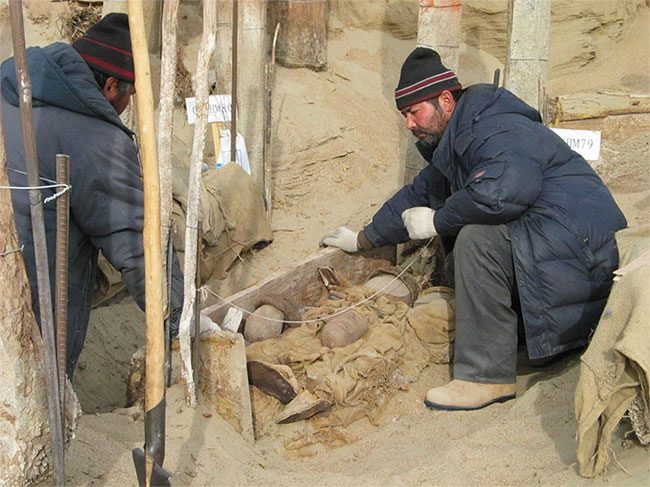
Archaeologists excavating mummies in the Tarim Basin. (Photo: National Geographic).
They had blonde and reddish-brown hair, prominent noses, and wore light clothing. Occasionally, their outfits were elaborate, made from wool, fur, or leather. Some wore pointed hats resembling witch hats, and their garments made from felt or woven fabric indicate a connection to Western cultures.
Others dressed in plaid clothing reminiscent of Celtic culture, similar to one of the mummies known as Chärchän Man, who stood over 1.8 meters tall, had red hair, and a thick beard, buried over 1,000 years ago.
Another notable body is that of the princess or beauty Xiaohe, dated to be 3,800 years old, with golden hair, high cheekbones, and long eyelashes, appearing to smile before her death.
She wore a large felt hat, ceremonial clothing, and jewelry, yet scientists have not been able to determine her social standing.
Since the publication of DNA studies on 13 Tarim mummies, scientists agree that they belonged to an isolated group living in the Bronze Age in today’s desert region.
They concluded that the mummies originated from ancient Northern European populations, a relatively small group of hunter-gatherers who migrated from the West to Central Asia and are genetically related to modern Europeans and Native Americans.
Preserved by Natural Environment
These bodies were not intentionally embalmed. Rather, it is the dry and salty environment of the Tarim Basin, home to the Taklamakan Desert, one of the largest deserts in the world, that caused the bodies to decompose slowly.
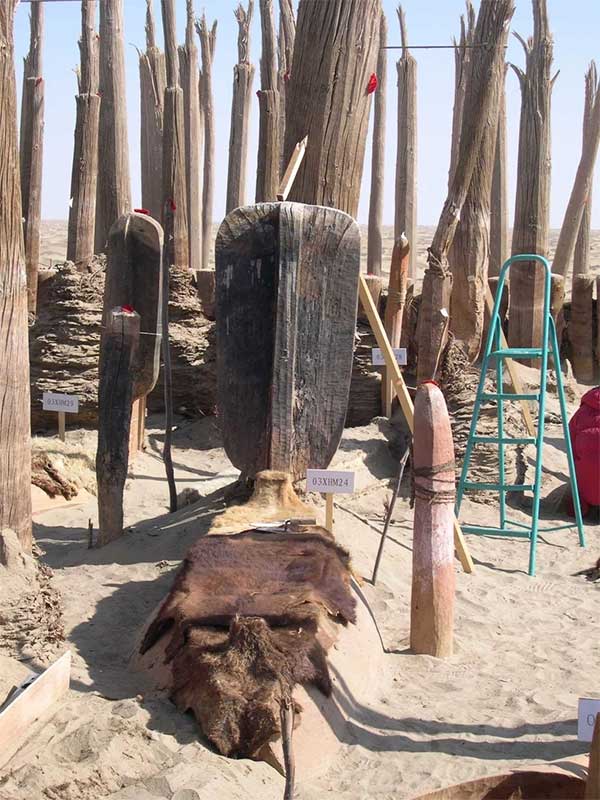
Diverse-shaped coffins used to contain the mummies. (Photo: National Geographic).
The harsh winter cold of this region may also contribute to their preservation. Researchers note that many bodies were buried in wooden boat-shaped coffins, covered with animal hides, and marked with wooden posts or paddles.
The discovery of Ephedra plants in the graves suggests that this plant likely had medicinal or religious significance.
However, archaeologists still do not know what this religion was or why certain graves included concentric wooden stakes or masks, branches, phallic objects, and animal bones found in cemeteries.
Although we know little about their culture, the mummies were buried with barley, millet, and wheat, even necklaces shaped like cheese, indicating they were farmers.
If the residents of the Tarim Basin were genetically distinct, their practices, from burial customs to cheese-making and clothing, reflected the techniques and arts prevalent at that time.
Scholars also argue that the people in the Tarim Basin traded and interacted with other peoples in what later became the important corridor of the “Silk Road“, connecting the east and west across the arid desert.
Yet, archaeologists still have much to learn about the daily lives of these ancient people, especially regarding their trade relationships, beliefs, and social hierarchy.



















































